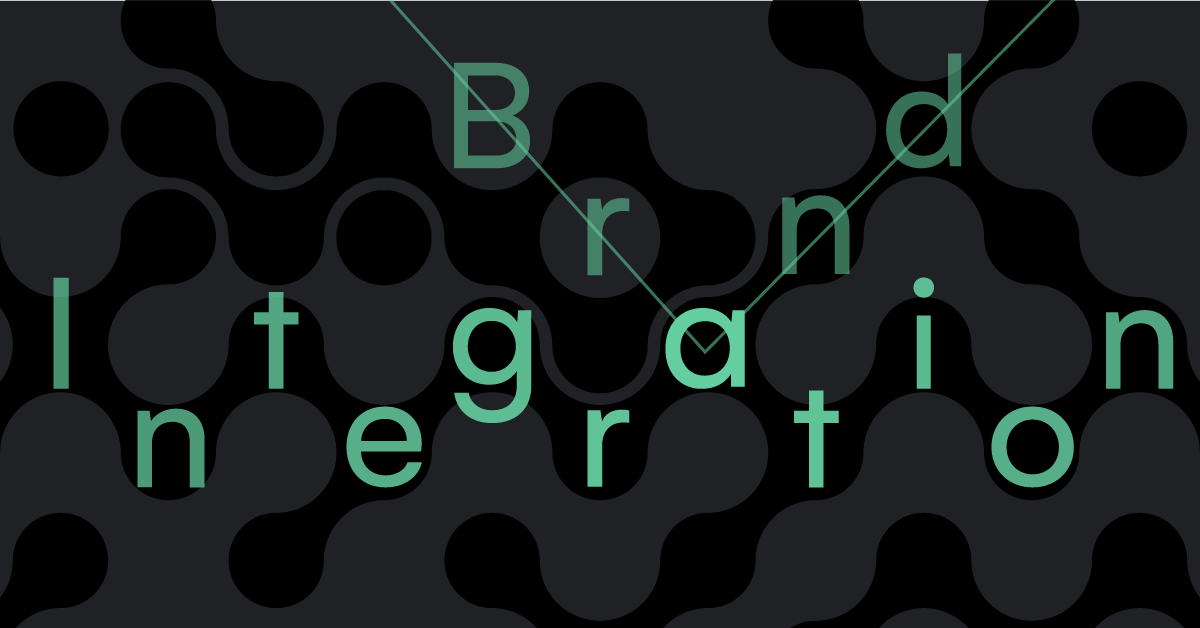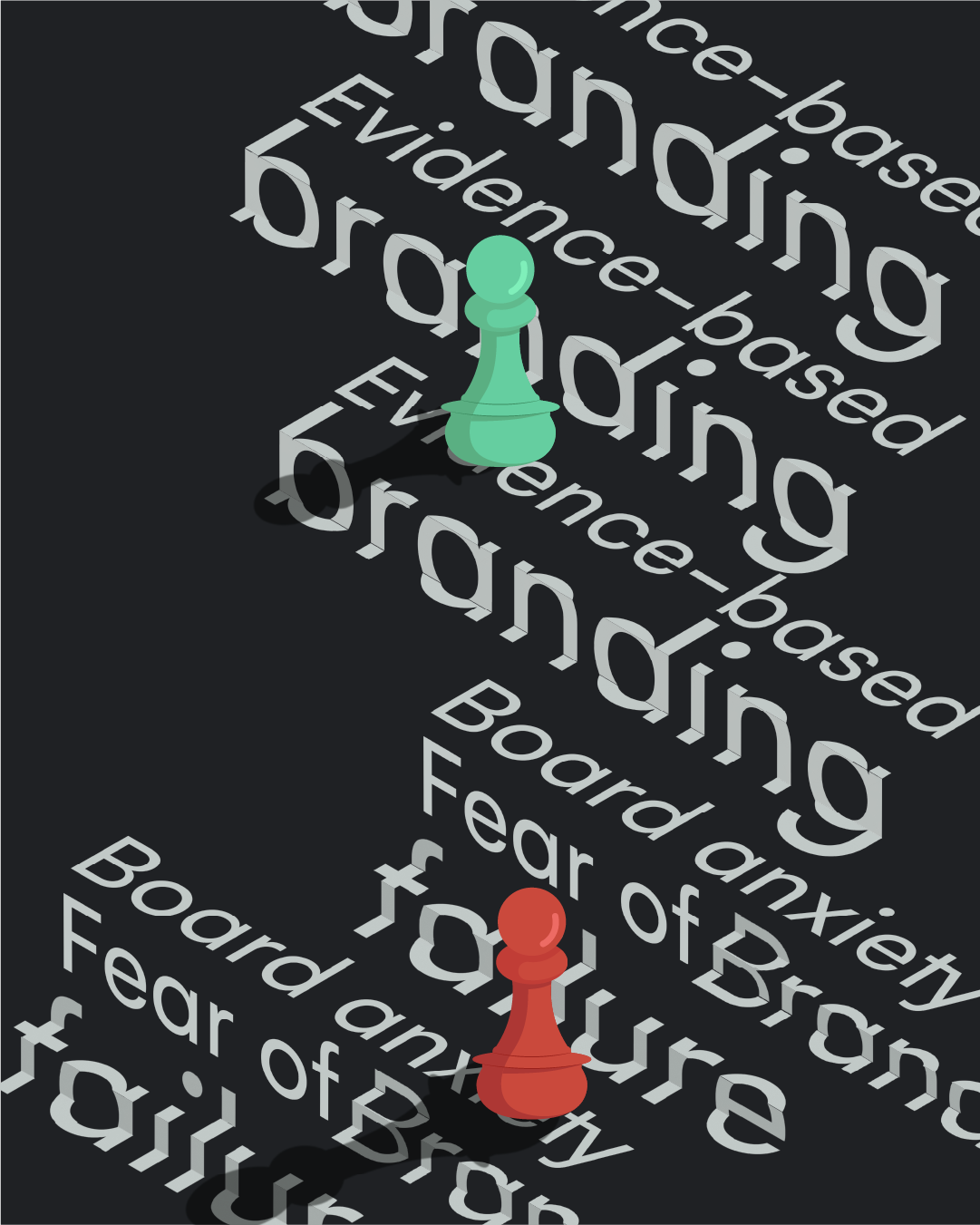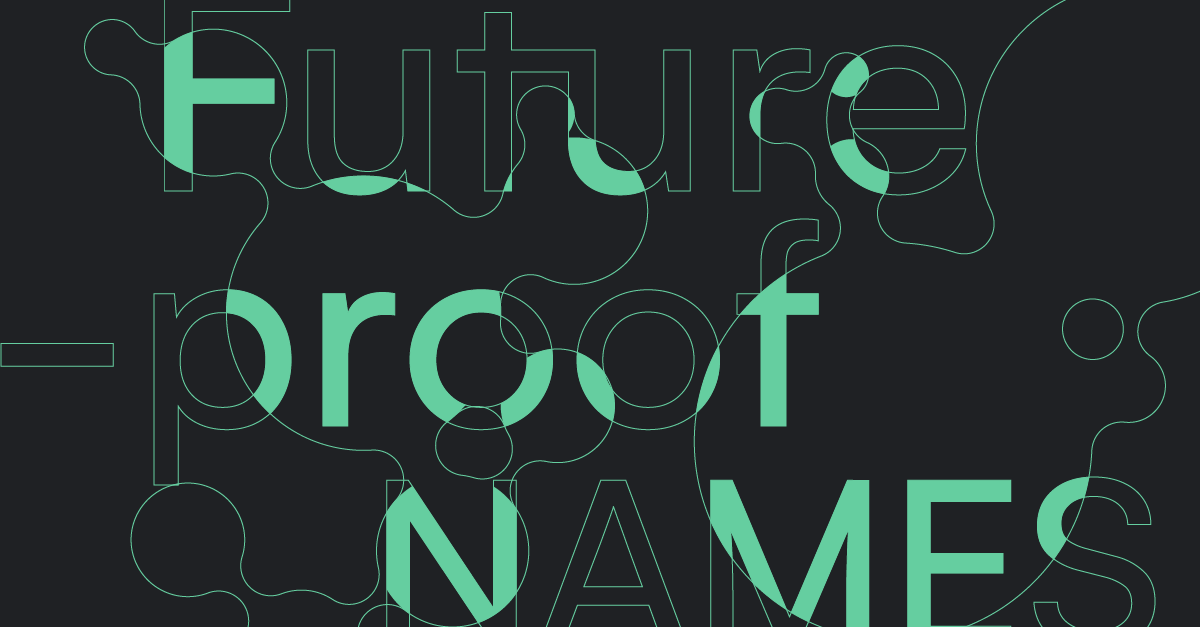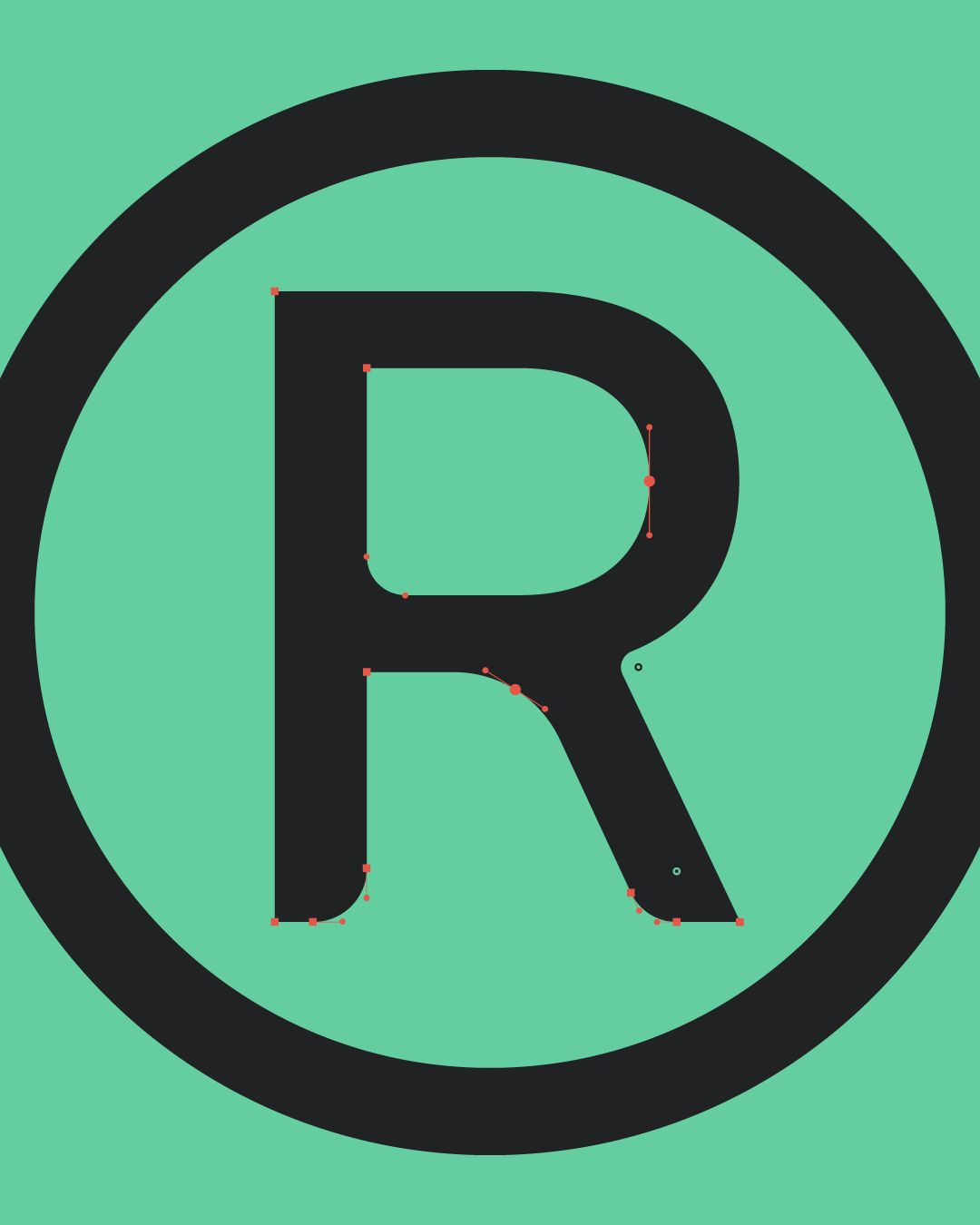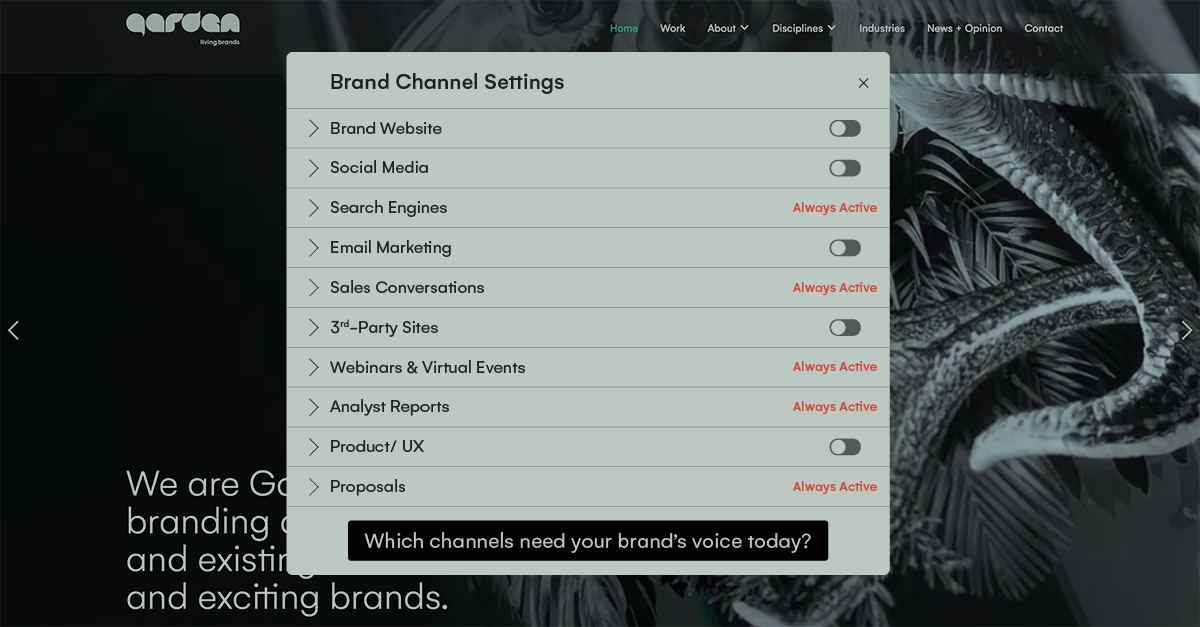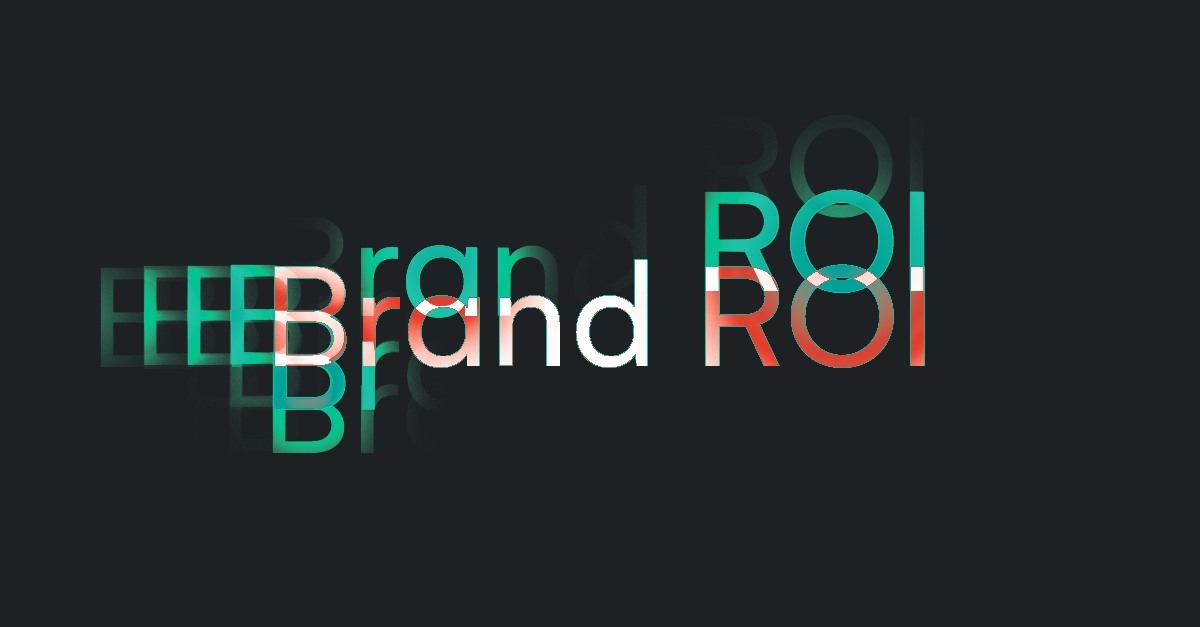What is branding? A strategic guide
Is a brand just a clever logo? A catchy slogan? The specific Pantone shade you guard with your life? Many think so, but that’s like mistaking a person’s signature for their entire personality. In reality, a brand is something far more profound. It is the fundamental "gut feeling" a customer has about your business, a perception shaped by a thousand tiny interactions.
Branding, therefore, is the deliberate and strategic process of shaping that perception. It’s the art and science of curating every experience your company, product, or service offers to build a specific, compelling, and memorable reputation in the minds of your target audience.
This guide will move beyond these surface-level definitions. It’s a comprehensive framework designed to help you understand, build, and leverage a powerful and authentic brand for long-term business success. We will journey from the core definition of a brand, deconstruct its essential elements, clarify its role against marketing, and illustrate the strategic process for building a unique identity that truly resonates.
Deconstructing branding: the core principles behind perception
What is a brand?
A brand is the perception or "gut feeling" a customer has about a business. It is not just a logo or slogan, but the sum of all experiences and interactions a person has with a company, its products, and its services. This perception shapes the company's reputation and its place in the market.
What is branding?
Branding is the strategic process of shaping a brand's perception. It involves intentionally managing every touchpoint a customer has with a company to build a specific and memorable reputation. The goal of branding is to create a strong, positive association in the minds of the target audience.
More than a mark: branding as a strategic promise
A brand is the sum of all experiences, associations, and emotions a person has with a company. It is not what you say you are, but what they perceive you to be. At its heart, it’s a promise of what your customer can consistently expect from you.
Think of it like a person’s reputation. A reputation isn’t built on a single statement or a stylish outfit; it’s built over time through actions, words, and how they make others feel. A brand works in precisely the same way. It’s a living entity, nurtured by consistency and authenticity.
"A brand is a person’s gut feeling about a product, service, or organisation." - Marty Neumeier, Brand Strategist & Author
The psychology of branding: building trust and recognition
Humans are wired for shortcuts. Effective branding taps into this by leveraging powerful cognitive biases like familiarity. When we recognise a brand, our brain does not have to work as hard to evaluate it. This cognitive ease makes purchasing decisions simpler and faster.
A consistent brand experience—from the tone of voice in an email to the user interface of your app—builds a robust pattern of recognition. This predictability fosters a deep sense of trust. When customers know what to expect, they feel secure. This trust is the bedrock of loyalty and a powerful driver for repeat business.
Over 59% of consumers prefer to buy new products from brands they are already familiar with, highlighting the power of recognition in purchasing decisions.
Common branding myths debunked
Misunderstandings about branding are common. Let’s clear up a few of the most persistent myths.
- Myth 1: "Branding is just for large corporations."
- Reality: It is arguably even more critical for small businesses. In a crowded marketplace, a distinct and compelling brand is the most effective way to differentiate your business and attract the right customers from the start.
- Myth 2: "My product is great, so I do not need branding."
- Reality: A great product without a brand is simply a commodity, forced to compete on price and features alone. A strong brand elevates a product, giving it meaning and a story that creates a powerful emotional connection.
- Myth 3: "Branding is a one-time project."
- Reality: Branding is an ongoing, dynamic process of management and evolution. Markets shift, customers change, and your business grows. Your brand must be managed to remain relevant and effective.
The anatomy of a brand: key elements of a cohesive identity
The foundational strategy: the 'why' behind your brand
Before a single colour is chosen or a logo is sketched, a robust brand must be built on a foundational brand strategy. This is the soul of your brand, the 'why' that guides every decision. A cohesive identity can only be developed from this strategic core.
- Purpose: Why does your company exist beyond making a profit? This is your ultimate contribution.
- Vision: What is the future you are working to create? This is your North Star.
- Mission: What do you do, who do you do it for, and how do you do it? This is your roadmap.
- Values: What are the non-negotiable principles that guide your company’s behaviour and decisions?
Tangible identity: the sights and sounds of your brand
This is where your strategy becomes sensory. These are the tangible assets you design and manage to articulate your brand to the world. They are the most recognisable components of your identity.
Visual identity: the look of your brand
- Logo and brandmark system: The primary symbol of your brand, designed to be unique, memorable, and flexible across all applications.
- Colour palette psychology: A curated selection of colours that evoke specific emotions and create a distinct mood aligned with your brand’s personality.
- Typography and font systems: The chosen typefaces that communicate your brand’s voice, from bold and authoritative to light and elegant.
- Imagery and art direction: The style of photography, illustration, and iconography that creates a consistent and recognisable visual world.
Verbal identity: the voice of your brand
- Brand name and tagline: The foundational verbal assets that encapsulate your essence and proposition.
- Tone of voice: The personality and character of your language. Are you witty and playful, or empathetic and reassuring? This must be consistent everywhere you write or speak.
- Messaging pillars and key value propositions: The core themes and benefits you want to communicate, articulated clearly and consistently across all marketing.
Intangible identity: personality and brand experience
Beyond the sights and sounds are the intangible elements that truly shape perception and build deep, lasting relationships.
- Brand personality: If your brand were a person, who would it be? Assigning human characteristics—like The Sage, The Jester, or The Hero—helps to unify its actions and communications, making it more relatable.
- Brand experience (BX): This is the culmination of every single touchpoint a customer has with your company. From the UX of your website and the unboxing of your product to the way your customer service team answers the phone, every interaction must consistently deliver on your brand promise.
Branding vs. marketing vs. identity: clarifying the strategic differences
These terms are often used interchangeably, but they represent distinct—though interconnected—concepts. Understanding the difference is crucial for effective strategy.
Brand identity: who you are
Brand identity is the collection of all the tangible and intangible elements you create to represent your brand. It’s your logo, your colour palette, your tone of voice, and your brand personality. Think of it as the internal toolkit you build as the foundation.
Branding: the strategic process of building a reputation
Branding is the active verb. It is the strategic process of using your brand identity to influence public perception and build a specific, intended reputation. It is the ongoing management and shaping of meaning in the minds of your audience.
Marketing: the tactics to promote and communicate
Marketing is the set of tools and tactics you use to communicate your brand and drive specific actions. SEO, social media campaigns, content marketing, and advertising are all marketing tactics. Marketing broadcasts the brand message to engage with customers.
An illustrative analogy: how they work together
Imagine your brand is a person.
- Their Identity is their unique personality, their style of dress, and the way they speak. It’s who they are at their core.
- Branding is how they intentionally act, speak, and present themselves to shape how others perceive them—as a leader, a creative, or a trusted friend.
- Marketing is them actively going to networking events, sending out their CV, or posting on LinkedIn to introduce themselves and achieve a specific goal.
The business imperative: why strategic branding drives growth
A powerful brand is not a vanity project; it is a hard-working business asset that drives measurable growth and creates a sustainable competitive advantage.
Commanding a price premium and increasing perceived value
Why are people willing to pay significantly more for an Apple laptop than a competitor with similar specs? The answer is brand. A strong brand builds a high perceived value, allowing you to command a premium price and insulate your business from a race to the bottom.
On average, strong, consistent brands see 33% more revenue than their weaker counterparts, proving the direct link between brand and bottom line.
Fostering unshakeable customer loyalty and advocacy
Branding transforms functional transactions into emotional connections. When customers feel aligned with your brand’s purpose and values, they move from one-time buyers to loyal fans. These advocates not only buy more over their lifetime but also become a powerful marketing force, recommending you to others and defending you in the market. This dramatically reduces customer acquisition costs and increases lifetime value.
Differentiating in a saturated market
In a world filled with endless choices and similar products, your brand is often the only truly unique differentiator. Consider two coffee shops on the same street, both selling excellent coffee. One might brand itself as a fast, efficient hub for busy professionals, while the other is a cosy, community-focused retreat. They sell the same product but attract entirely different loyal followings because their brands offer a distinct experience and promise.
Unifying internal culture and attracting top talent
A compelling brand works inside-out. For employees, it provides a shared purpose and a clear mission, unifying the team and improving morale, productivity, and retention. This is often called employer branding. Externally, a company with a strong, positive reputation becomes a magnet for A-players, making it easier to attract and retain the top talent needed to innovate and grow.
"Your brand is what other people say about you when you are not in the room." - Jeff Bezos, Founder of Amazon (This quote perfectly encapsulates how an external brand starts with internal actions and culture.)
The blueprint of a brand: a look inside the professional process
Building a world-class brand is a disciplined, strategic endeavour. While the specifics may vary, the professional process, often led by a dedicated branding agency, typically follows a clear, four-phase path.
Phase 1: immersion and strategic discovery
This is the foundational stage where everything begins. It is a deep dive to uncover the truth of the business, its audience, and the market. Key activities include stakeholder interviews, a comprehensive competitive landscape analysis, deep target audience research (exploring demographics, psychographics, and pain points), and a thorough market audit.
Phase 2: brand strategy and positioning
Here, the raw data from the discovery phase is synthesised into a clear, actionable strategic platform. This is where a brand consultancy defines the core of the brand. Key deliverables include articulating the brand’s unique value proposition, crafting a powerful positioning statement, establishing core messaging pillars, and defining the brand personality or archetype.
Phase 3: identity design and system creation
This is the phase where strategy becomes tangible and visible. Guided by the strategic platform, designers and writers begin to craft the visual and verbal identity. Key activities include logo design exploration, development of colour and typography systems, creating templates for key collateral (like presentations or social media), and compiling everything into a comprehensive brand style guideline to ensure future consistency.
Phase 4: brand activation and implementation
A brand is only valuable once it is alive in the world. This phase involves the strategic rollout of the new or refreshed brand across all touchpoints. Key activities include launching a new website, updating all social media profiles, creating new marketing collateral, and—critically—training internal teams to become passionate brand ambassadors who understand and can articulate the brand’s promise.
Is your brand working? When to consider a brand refresh or rebrand
A brand is not static. To remain effective, it must be evaluated and sometimes updated. But how do you know when it’s time for a change?
Telltale signs your brand is underperforming
Here is a simple checklist to help you self-diagnose your brand’s health:
- You frequently have to explain your business name or what you do.
- You are consistently competing on price rather than value.
- Your visual identity looks dated compared to your competitors.
- Your brand no longer accurately reflects your company's mission, vision, or current offerings.
- You struggle to attract top talent.
- Your team members describe the company in wildly different ways.
The strategic choice: brand refresh vs. full rebrand
If you recognise the signs above, the next step is to decide on the scale of the change required.
- Brand refresh (evolution): This is a cosmetic update to the brand identity to modernise its look and feel without altering the core brand strategy. It’s about keeping the brand relevant and contemporary.
- Full rebrand (revolution): This is a fundamental change to the brand’s strategy, positioning, and identity. It is a deeper, more strategic shift, often driven by a merger, a significant pivot in the business model, or a move into entirely new markets.
Partnering for success: the role of a brand consultancy
Navigating a brand refresh or rebrand is a complex process with high stakes. This is where the expertise of a professional brand consultancy agency becomes invaluable. A global branding consultancy provides a crucial objective perspective, deep strategic expertise, and a proven process to ensure the change is not just aesthetic but is grounded in sound business objectives. Partnering with experts in brand consultancy ensures your investment leads to measurable, long-term results, positioning your business for its next chapter of growth. If you feel your brand needs an expert touch, get in touch with our branding experts to discuss your project.
Branding is not an art project; it is the most critical strategic asset a business owns. It is the intentional and continuous process of shaping perception, the invisible thread that connects every part of your business and separates market leaders from the noise.
Like any valuable asset, your brand is a living entity that requires constant management, investment, and care to remain relevant, powerful, and authentic.
So, we leave you with one final question to reflect on: is your brand an afterthought, or is it the strategic engine driving every decision your business makes?













.jpg)


















